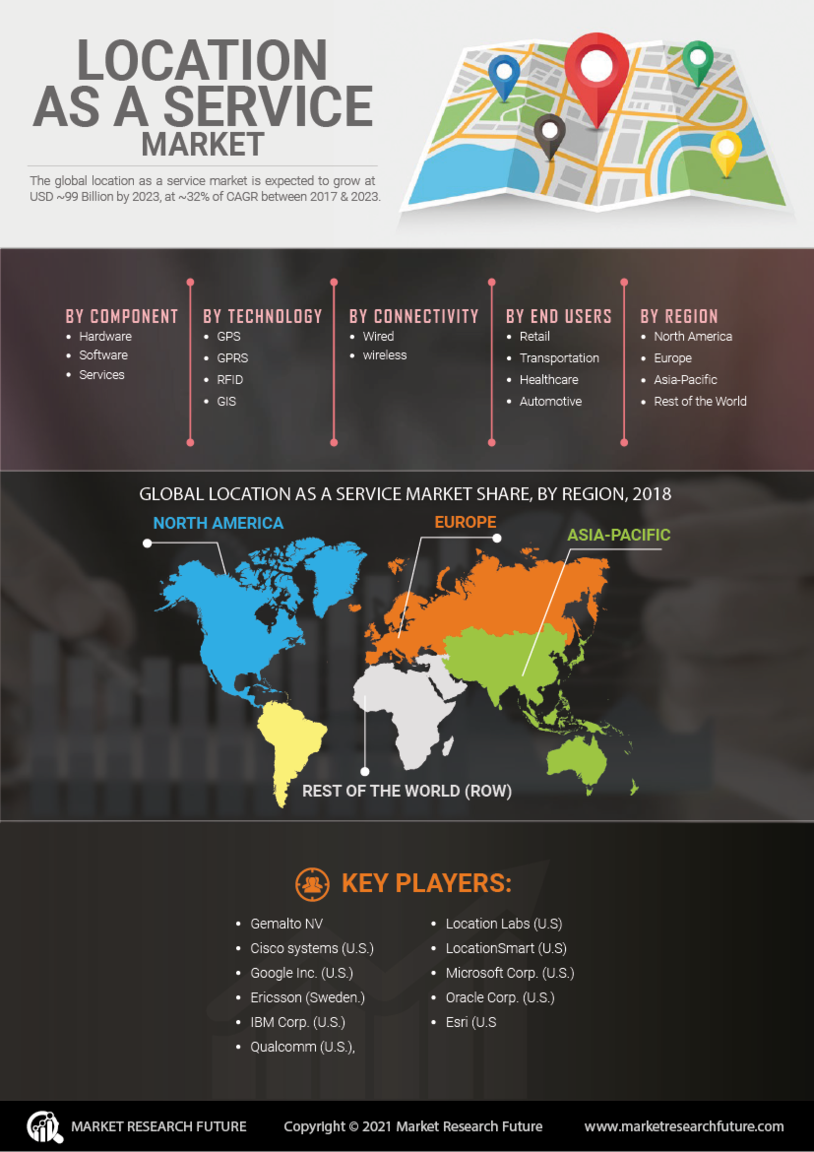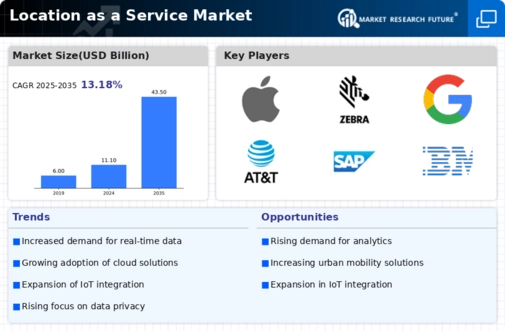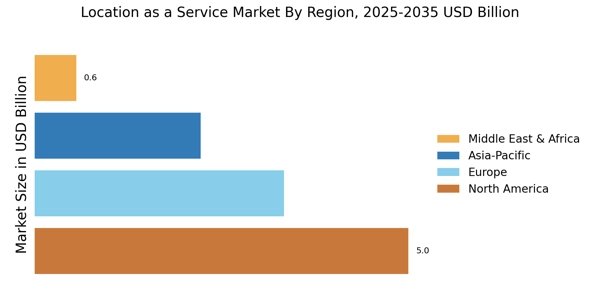Growth of Mobile Applications
The proliferation of mobile applications is significantly influencing the Location as a Service Market. With the increasing adoption of smartphones, businesses are integrating location-based services into their applications to provide personalized experiences. This trend is evident in sectors such as travel, where apps utilize location data to offer tailored recommendations. The market for mobile location-based services is expected to grow at a compound annual growth rate of 25% over the next five years. As more companies recognize the potential of mobile applications to drive customer engagement, the Location as a Service Market is poised for substantial growth, fostering innovation and competition.
Advancements in IoT Technology
The Location as a Service Market is being propelled by advancements in Internet of Things (IoT) technology. IoT devices, equipped with location capabilities, are becoming increasingly prevalent across various industries, including healthcare, agriculture, and smart cities. These devices generate vast amounts of location data, which can be harnessed to improve decision-making and operational efficiency. The integration of IoT with location services is expected to create new opportunities, with the market projected to reach USD 30 billion by 2027. As organizations seek to leverage IoT for enhanced location intelligence, the Location as a Service Market is likely to witness transformative changes.
Emergence of Smart City Projects
The emergence of smart city projects is significantly impacting the Location as a Service Market. Governments and municipalities are investing in smart infrastructure that incorporates location-based services to enhance urban living. These projects aim to improve transportation systems, reduce energy consumption, and enhance public safety through efficient location tracking. The smart city market is anticipated to reach USD 1 trillion by 2025, highlighting the potential for location services to contribute to urban development. As cities evolve into smart ecosystems, the Location as a Service Market is likely to grow, providing essential tools for urban planners and local governments.
Rising Demand for Real-Time Location Data
The Location as a Service Market is experiencing a notable surge in demand for real-time location data. This demand is driven by various sectors, including retail, logistics, and transportation, which increasingly rely on accurate location information to enhance operational efficiency. According to recent estimates, the market for real-time location services is projected to reach USD 20 billion by 2026. Companies are leveraging this data to optimize supply chains, improve customer experiences, and enhance safety protocols. As businesses recognize the value of location intelligence, the Location as a Service Market is likely to expand, offering innovative solutions that cater to these evolving needs.
Increased Focus on Supply Chain Optimization
The Location as a Service Market is witnessing a heightened focus on supply chain optimization. Businesses are increasingly utilizing location-based services to streamline logistics and enhance inventory management. By leveraging real-time location data, companies can track shipments, reduce delays, and improve overall efficiency. The Location as a Service is projected to grow to USD 12 trillion by 2027, indicating a substantial opportunity for location services to play a critical role in this sector. As organizations prioritize supply chain resilience, the Location as a Service Market is expected to expand, offering solutions that address these pressing challenges.


















Leave a Comment